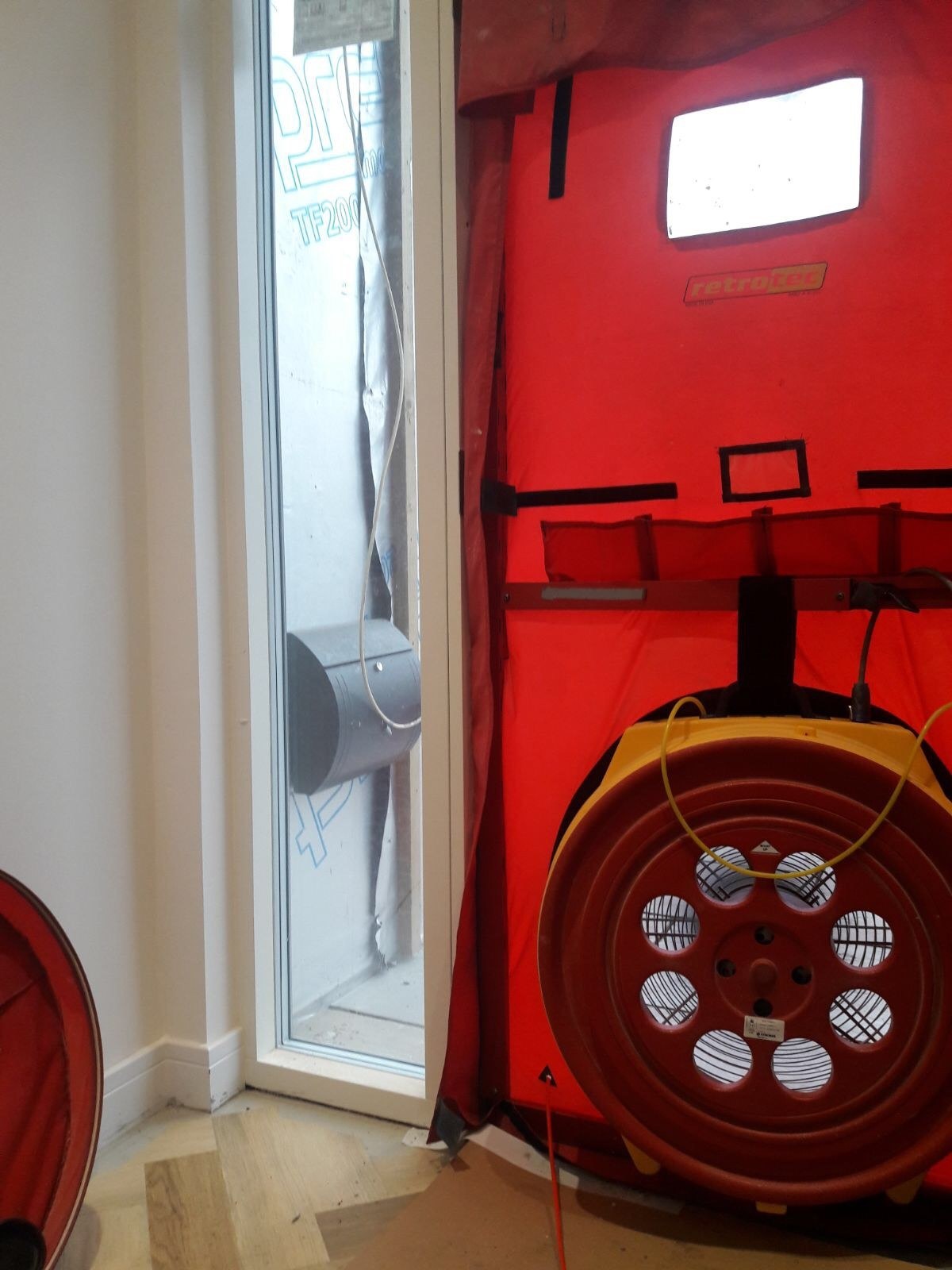Air Tightness
Air Tightness (also known as air leakage, air infiltration or air permeability testing) is a quick, non-invasive procedure designed to measure the total air lost through leaks in the building fabric. This is often referred to as uncontrolled ventilation.
Air tightness tests are important in establishing the energy efficiency of new buildings and can identify poor build quality within new developments. With the introduction of tougher regulations, building design will often consider air tightness early in the construction process to ensure it complies on competition. We would definitely recommend for all properties, particularly more complicated projects, that a pre-test is arranged. This is an air tightness test that is carried out prior to plasterboard and finishing elements such as skirting being installed, as this allows the technician to test the building fabric to the membrane. This helps to indicate whether you are on track or need to make any amendments to the construction.
Air leakage occurs through gaps and cracks in the fabric of the building envelope, allowing heat to escape, thus increasing heating bills and CO2 production. Regulation 6.2.3 of the Scottish Building Technical Standards. The verifier (Building Control officer) may request that the frequency of testing be varied as considered appropriate to ‘reasonable inquiry’ and response to previous test results within a development.
A development of one dwelling ‘must’ be tested as it will not be possible to obtain comparative data on the quality of construction from similar dwellings.

Alternatively, for any single dwelling or number of dwellings, where a default design value of 15m3/h.m2 @ 50 Pa is stated in demonstrating compliance under Standard 6.1, testing does not need to be carried out. If the dwelling has an Air Permeability rating over 7m³/h/m² at 50pa in Scotland then the property will fail the test, due to significant uncontrolled air leakage. This leakage can result in:
- Unwanted heat loss
- Discomfort for occupants (cold homes)
- Increased heating bills
- Greater CO2 emissions
Testing should be carried out in accordance with BS EN 13829: 2001 – ‘Thermal performance of buildings - determination of air permeability of buildings - fan pressurization method’ http://shop.bsigroup.com/.
Practical advice on procedure for pressure testing is given in the ATTMA publication ‘Measuring Air Permeability of Building Envelopes' http://www.attma.org/
There are different levels of air tightness testing established from the size and complexity of a building. An overview of each is provided below:
Level 1: Air Pressure Testing for single dwellings and other smaller non-dwellings up to 4000 m³ gross envelope volume, typically tested with a single blower door fan.
Level 2: Air Pressure Testing for simple and complex buildings larger than 4000 m³ gross envelope volume. This does not include large and complex, high rise (LCHR) buildings, and phased handover/zonal buildings.
PH: Passivhaus certified to test to 0.6ac/h as per ATTMA (TSL 4)
Air Testers install blower door testing equipment (large fans) to an external opening (typically a doorway) and will use this to pressurize the building and test over pressure differentials. The external air pressure then flows in through cracks and openings. Level 2 air testers can use Multi-fan blower door systems, instead of Single-fan systems, to test the air tightness of large commercial buildings.
Hints & Tips
- Always make sure you’re ready for an Air Tightness Test by observing the checklist supplied - this saves on any abortive fees if the test fails or the building can’t be tested.
- To test we require all architectural drawings and the SAP calculation to determine the internal envelope and permeability.
- We have a 48 hour cancellation policy.
- Don’t rush the test date - we always advise that you engage us just before the cleaners are due to arrive.
Need more advice? Get in touch
If you have any queries regarding Air Tightness Testing, get in touch using the form, or one of the contact methods below.
Call +44 1383 257022
or email info@SKAD.co.uk
